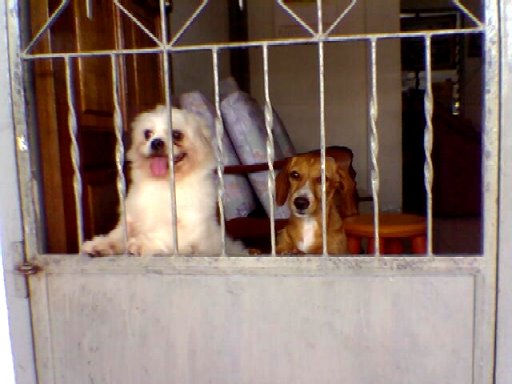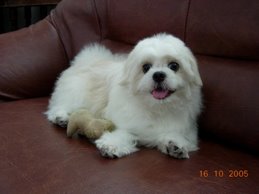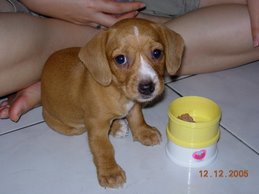Finding The Right Dog Cone Alternative
When the time comes for a trip to the veterinarian, coaxing the family dog into the car is the first hurdle. The second is caring for that animal if surgery is recommended. Any operation can be traumatic, but wearing the protective gear that prevents dogs from licking wounds afterward can also cause distress. Plastic barriers are effective, but many pet owners seek a better dog cone alternative.
It can be heartbreaking to witness a sad canine attempt to eat and move normally wearing a large, restrictive plastic device. There are people who insist that dogs feel no higher emotions such as humiliation, sadness or embarrassment, but that is not the case. Some become so visibly depressed they refuse favorite foods and will not move, complicating the recovery process.
Standard protective devices are made of tough, rigid plastic. They resemble a white megaphone with the small end around the neck, and the flared end extended past the nose, making it impossible for the animal to reach the itchy places. They are sometimes called Elizabethan collars, because they resemble the familiar formal neck wear of that period. Dogs universally hate them.
Although licking is natural, it can disturb a healing incision, causing infection and bleeding. If a collar is not worn, there can be painful and costly complications. Pet supply chains often stock a wide selection of devices that perform the same function less intrusively, sold under several brand names. They fit a variety of body sizes, and are designed to shield different regions.
In this age of euphemism, these protections are labeled avoidance tools. One style closely resembles the human neck braces commonly worn by whiplash victims. This adaptable choice makes it harder to bite a healing wound, but in a less restrictive manner. They are most advantageous when a problem affects the torso or front legs. Another style is a wide, inflatable collar that looks like a life-saver shaped balloon.
These are made of soft plastic, and an enterprising canine may quickly figure out how to deflate them, but they are recommended for quiet breeds. These styles work well when the goal is to prevent biting at the hindquarters, because they block turning ability. Dogs seem to find them more bearable. Specially designed footwear, shorts, or body encompassing sweaters can also prove helpful.
Large, strong dogs that are adept at chewing and biting themselves may benefit from flexible collars that extend from neck to torso. Filled with foam, they restrict specific movements without increasing anxiety. Many dogs feel more comfortable wearing a traditionally shaped style that is made of fabric-covered foam instead of hard plastic. Smaller pets, including felines, find they make eating easier.
Take a neck measurement before visiting the store. Most barriers work best when extended one inch or more past the nose. Select a collar that will appropriately restrict access to the injured area. If the dog normally stays home alone during the day, do a test observation before leaving to make sure he can move and drink water properly. A speedy recovery depends on concerned care.
It can be heartbreaking to witness a sad canine attempt to eat and move normally wearing a large, restrictive plastic device. There are people who insist that dogs feel no higher emotions such as humiliation, sadness or embarrassment, but that is not the case. Some become so visibly depressed they refuse favorite foods and will not move, complicating the recovery process.
Standard protective devices are made of tough, rigid plastic. They resemble a white megaphone with the small end around the neck, and the flared end extended past the nose, making it impossible for the animal to reach the itchy places. They are sometimes called Elizabethan collars, because they resemble the familiar formal neck wear of that period. Dogs universally hate them.
Although licking is natural, it can disturb a healing incision, causing infection and bleeding. If a collar is not worn, there can be painful and costly complications. Pet supply chains often stock a wide selection of devices that perform the same function less intrusively, sold under several brand names. They fit a variety of body sizes, and are designed to shield different regions.
In this age of euphemism, these protections are labeled avoidance tools. One style closely resembles the human neck braces commonly worn by whiplash victims. This adaptable choice makes it harder to bite a healing wound, but in a less restrictive manner. They are most advantageous when a problem affects the torso or front legs. Another style is a wide, inflatable collar that looks like a life-saver shaped balloon.
These are made of soft plastic, and an enterprising canine may quickly figure out how to deflate them, but they are recommended for quiet breeds. These styles work well when the goal is to prevent biting at the hindquarters, because they block turning ability. Dogs seem to find them more bearable. Specially designed footwear, shorts, or body encompassing sweaters can also prove helpful.
Large, strong dogs that are adept at chewing and biting themselves may benefit from flexible collars that extend from neck to torso. Filled with foam, they restrict specific movements without increasing anxiety. Many dogs feel more comfortable wearing a traditionally shaped style that is made of fabric-covered foam instead of hard plastic. Smaller pets, including felines, find they make eating easier.
Take a neck measurement before visiting the store. Most barriers work best when extended one inch or more past the nose. Select a collar that will appropriately restrict access to the injured area. If the dog normally stays home alone during the day, do a test observation before leaving to make sure he can move and drink water properly. A speedy recovery depends on concerned care.
>














.jpg)






.jpg)

0 comments:
Post a Comment